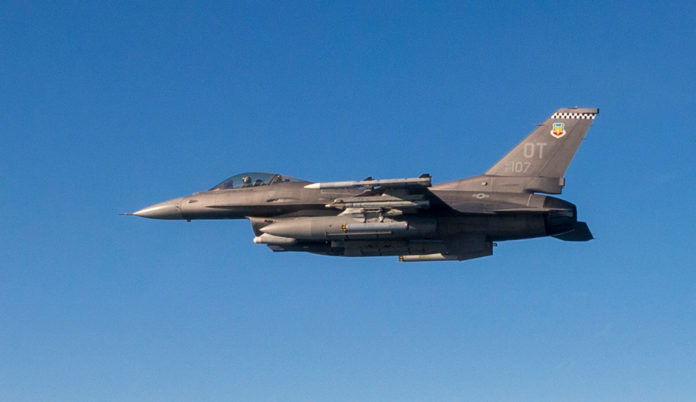
The US Air Force successfully demonstrated the intercept of an aerial target using the AGR-20A Advanced Precision Kill Weapon System (APKWS) laser-guided rocket. The test was carried out by the US Air Force Air Combat Command’s 85 Test and Evaluation Squadron Eglin Air Force Base, Fla., on December 19, 2019, providing a proof of concept for using rockets queued from an F-16 targeting pod as viable munitions to perform cruise missile defense.
The BQM-167 target drone that represented a cruise missile was intercepted over the Gulf of Mexico water range using cueing from the targeting pod carried by the F-16. On that mission, the aircraft was loaded with two pods each carrying seven 2.75″ (70 mm) guided rockets, plus four AIM-120 AMRAAM air/air missiles. The test successfully demonstrated shooting a small drone at low altitudes. A single APKWS was required to down the target.
“The test was unprecedented and will shape the future of how the Air Force executes CMD,” said Col. Ryan Messer, commander, 53d Wing. “This is a prime example of how the 53d Wing is using resources readily available to establish innovative ways that enhance combat capabilities for our combat units.” Moving forward, the method could be used to defeat multiple targets representing a more realistic cruise missile attack. “This proof of concept can have implications for homeland defense missions, Combined Defense of the Arabian Gulf, and beyond,” said Messer.
Originally developed as a low cost, low collateral damage air-to-ground weapon for use in Afghanistan and Iraq, adapting the AGR-20A for counter-air use is momentous. At a cost of $30,000, the AGR-20A is about four percent of the cost of an AIM-120 missile commonly used for cruise missile defense. Due to its limited range, Unlike the AMRAAM that can be fired from a long-range, AGR-20A can be used only at short range and in good weather conditions. However, using Millimeter-Wave seekers could enhance its operability at inclement weather conditions. APKWS-II was developed and is produced by BAE Systems.
Other advantages of the AGR-20A are the bigger loadout (more missiles carried by each aircraft) and the ability to load weapons faster than an AIM-120. In 2016 the rocket has been integrated with F-16 and A-10 and US Marine Corps F/A-18D under an urgent operational need and was deployed in Operation Inherent Resolve (fighting ISIS in Iraq and Syria) since 2017. Other fixed-wing integrations include the Airbus AC-235 (the Jordanian gunship) and Embraer Super Tucano (for Lebanon and Nigeria). The weapon has also been exported to or ordered by a number of Middle Eastern countries including Jordan, Lebanon, Qatar, UAE, and Saudi-Arabia, as well as Nigeria.



















